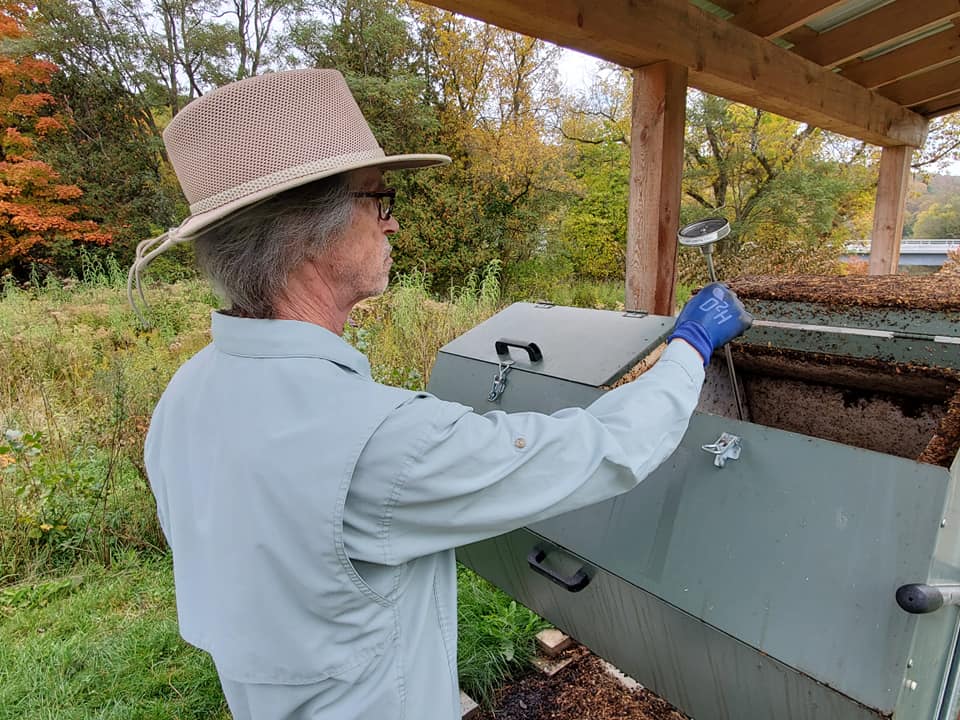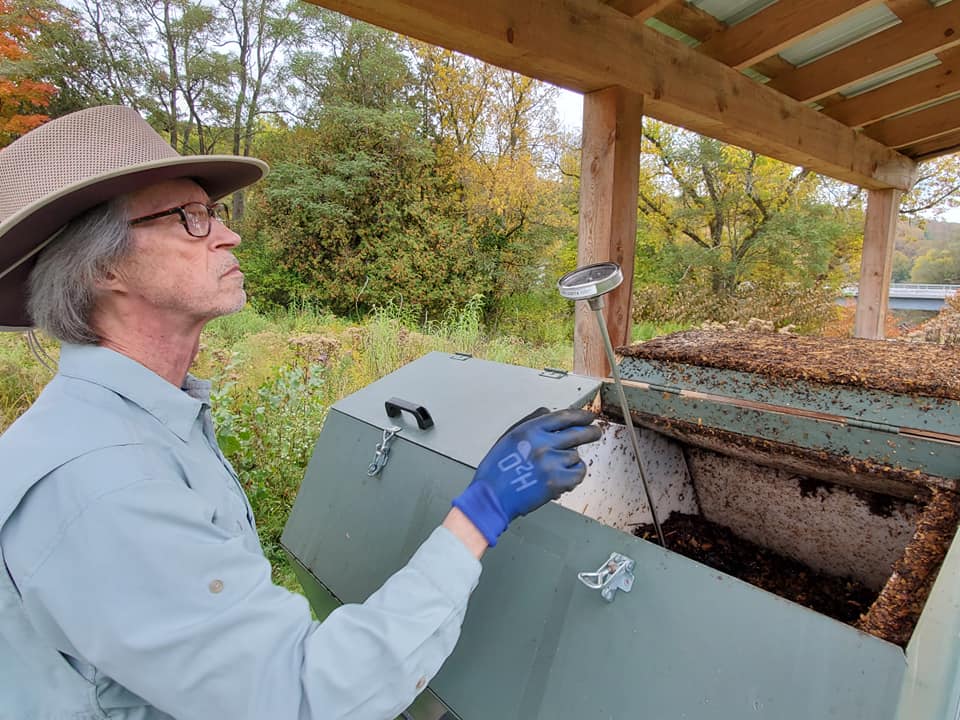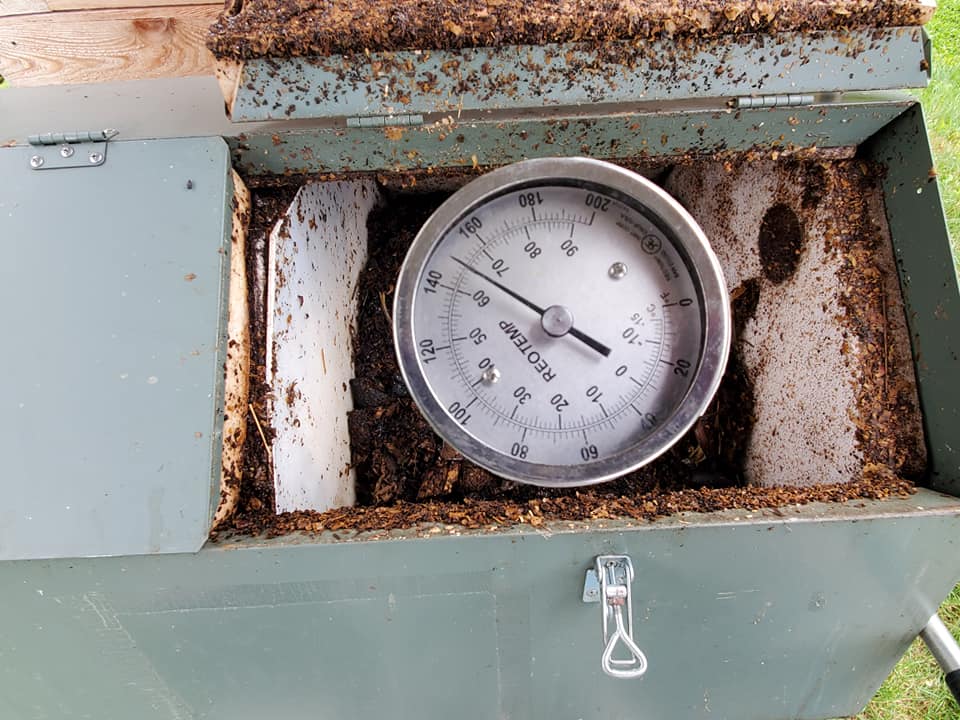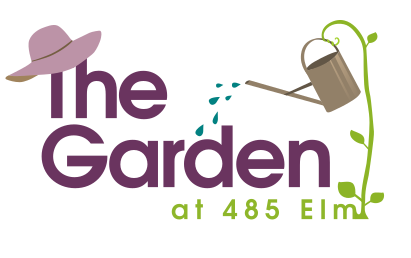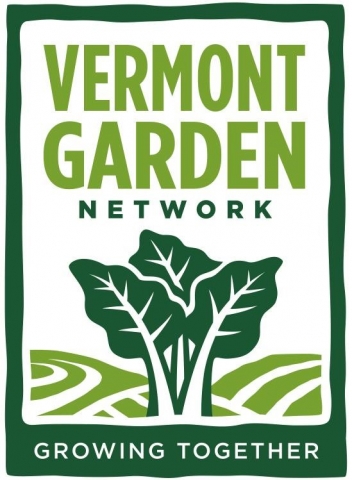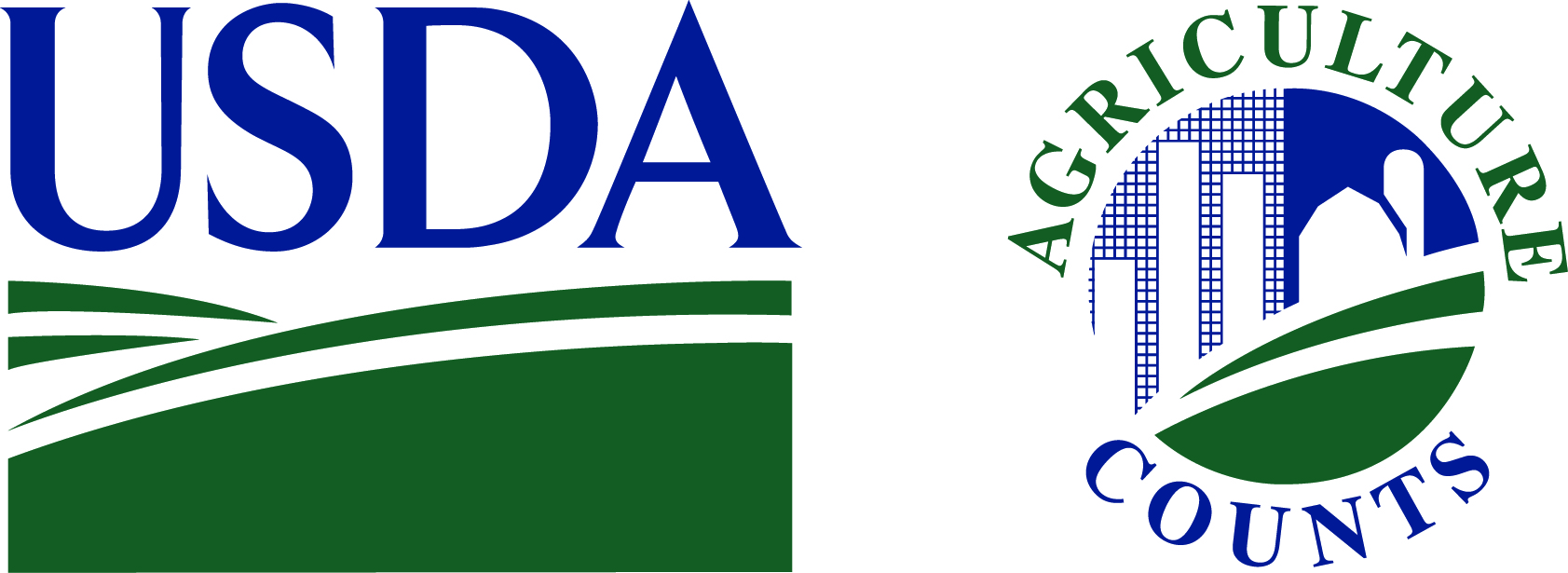Eventually, everything that was once an animal, vegetable, or mineral will break down—it will all compost. Without help, that could take months, years, decades. Here at the Garden at 485 Elm, we’re making compost happen faster.
What’s the rush?
With Vermont law banning food scraps in landfills, gardeners could take household food scraps to one of several drop-off sites. We could drive our garden waste to the stump dump.
But carting stuff around takes time and fossil fuels and disregards a rich source of nutrients we could use right here. We’d rather feed those nutrients back to the earth in and around the garden.
So we have Compostville, a small-scale community composting system, right here. We want to use gardeners’ food scraps and garden waste to feed the garden and divert these materials from the waste stream. (Check out our humble little Compostville in this national news story!)
Another Way Taking Temperature Increases Public Safety
Regularly checking compost temperature is critical. For food scraps to be safe to use in the garden, compost temperatures must reach pathogen-kill levels: at least 131 degrees Fahrenheit for three days. If it drops below that, turning the compost to mix and aerate the materials within can help spike the temperature. Here’s what that looks like.
